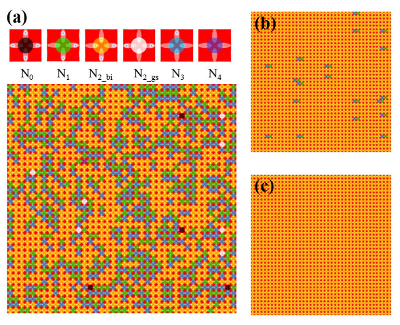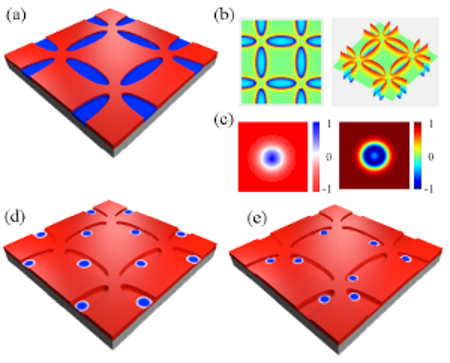 Figure 4:
Vertex configuration of the square skyrmion ice system.
(a) as-relaxed random state with all of the six vertex types present,
(b) nonsaturated biased state containing N1 and N3
monopole pairs, and (c) saturated biased state with only N2−bi
vertices. Vertices are colored depending on how many skyrmions are near each
vertex as illustrated at the top of the figure: N0 (gray), N1 (green),
N2−bi (yellow), N2−gs (white), N3 (blue), and N4 (purple).
Figure 4:
Vertex configuration of the square skyrmion ice system.
(a) as-relaxed random state with all of the six vertex types present,
(b) nonsaturated biased state containing N1 and N3
monopole pairs, and (c) saturated biased state with only N2−bi
vertices. Vertices are colored depending on how many skyrmions are near each
vertex as illustrated at the top of the figure: N0 (gray), N1 (green),
N2−bi (yellow), N2−gs (white), N3 (blue), and N4 (purple).
|
